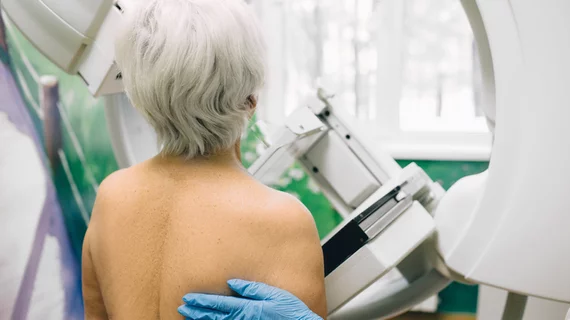Recently, radiologists have reported seeing swollen lymph nodes on breast imaging exams in patients who have received a COVID-19 vaccine. Some experts have warned this side effect mimics cancer and may fool some doctors into diagnosing patients with the deadly disease.
Providers are increasingly likely to run into these situations as nationwide vaccine rollout continues, yet management recommendations vary. To help eliminate confusion, Hospital of the University of Pennsylvania in Philadelphia providers on Friday shared their own experiences and offered up guidance to appropriately manage these patients and avoid unnecessary procedures.
“Early clinical experience with coronavirus disease vaccination suggests that the approved … vaccines cause a notably higher incidence of axillary lymphadenopathy on breast MRI compared to other vaccines,” Christine E. Edmonds, MD, an assistant professor of radiology at Penn Medicine, and colleagues explained in AJR.[1] “Guidelines are needed to appropriately manage MRI-detected unilateral axillary lymphadenopathy in the era of COVID-19 vaccination and to avoid biopsies of benign reactive nodes.”
Penn researchers were complelled to write their Feb. 5 article after a 48-year-old woman with a strong family history of breast cancer had unilateral left axillary lymphadenopathy on her baseline breast MRI exam. After review, doctors discovered she had received her first vaccine dose 13 days before her visit.
In light of this situation, and additional research, the healthcare giant has added questions to its breast imaging intake forms to determine if a patient has received a vaccine, when, and on what side of their arm. And if MRI detects isolated unilateral axillary lymphadenopathy on the same side as the vaccinated arm within four weeks of either dose, doctors consider it “most likely” a vaccine-related side effect.
In such cases, Edmonds et al. said they will assess the swollen lymph nodes as BI-RADS 3 (probably benign) and recommend a follow-up ultrasound within 6-8 weeks after a patient’s second dose.
To best make these critical care decisions, the authors underscored the importance of having patients’ COVID-19 vaccine documentation history within the medical record. It will likely take several additional months to gather the data necessary to optimize management and treatment for these individuals.
“As we gain further data on the expected time-course of axillary lymphadenopathy post COVID-19 vaccination, we may refine these guidelines,” the authors noted. “However, in the meantime, this management pathway will allow us to avoid many unnecessary biopsies of benign vaccine-related reactive lymphadenopathy”

